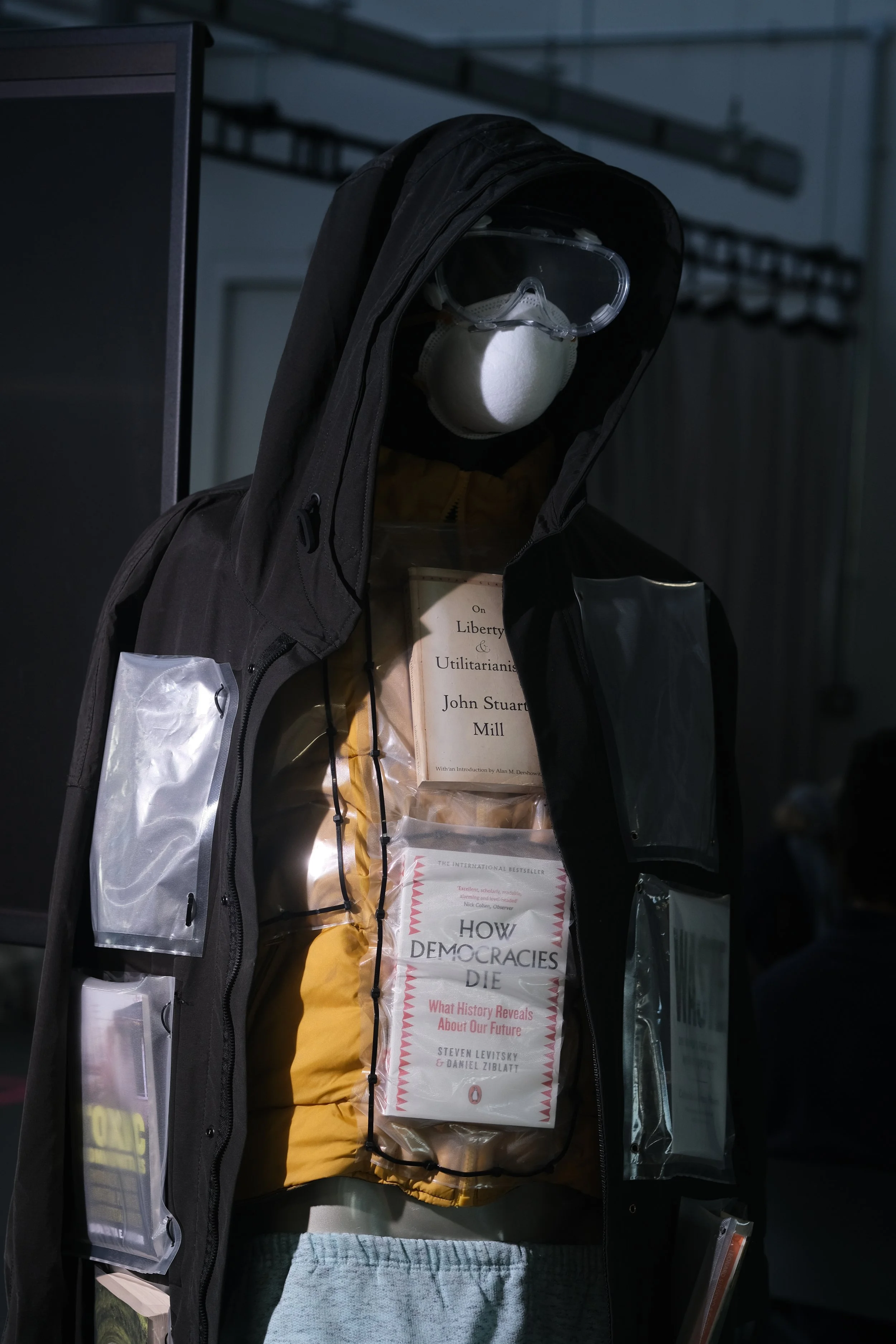Conflicting Values
With the advent of social platforms, globalization, and radical “infotainment”, even though people are more connected than ever before, ironically, it seems increasingly that society is more fragmented and secularized. In an age of conflicting opinions, values, and cultures, how can design make a positive impact and help empower those in need?
Project duration: 2 Months
Key Skills:
Full Document:













Social unease
With the advent of social platforms, globalized trade, and around-the-clock media, people are more connected than ever; ironically, this connection seems to have made people more secular, isolated, radical, and willing to protest.
In response to the rise in police militarization and brutality, can design act as an equalizer to protect protesters?
Necessity dictates innovation
In order to combat enforcement strategies, dissidents have become adept at utilizing items in unexpected ways to protect themselves. How could design formalize or democratize these ideas or objects? Could this be an intervention point?
Who is in danger?
When looking at the demographics of protest attendees, outspoken students can be commonly seen. Could we utilize books, which are easily accessible to students, as a from of protection?
“Durable paper”
Although it sounds oxymoronic, paper, if properly treated, can be a durable, lightweight, and waterproof material: perfect for body armour. Historical documents have suggested that the ancient Chinese utilized resin-reinforced paper armour: which, during modern testing provided similar protective effects as steel plate armour but at a fraction of the weight.
Preliminary prototyping
To mock-up how books could be used to protect people, I bought a jacket to modify for testing. Here, I was interested in a variety of methods of securing different sized pockets to store books for protection.
Further making
After testing a few ways of securing pockets for books, I decided to make a full set (torso and pants) with zip ties to democratize protective armour. My creations, as it turned out, was similar to the way that bulletproof vests are constructed and designed.
Testing my creations
With a wearable set, I conducted testing, and had books located based on the places that police were trained to strike. By using a police handbook on baton and hand-to-hand techniques, I mapped the locations of vulnerable areas on people’s bodies outlined in the literature.
Gathering feedback
To further develop these articles of clothing, I prepared my work to be displayed in the 2022 Royal College of Art WIP show. I hoped to get critical feedback on how I could better realize my concept.
Displaying my work
During the show, I received many insights from the attending guests. The majority of the comments centred around the integrity of the zip ties and the construction of the book pockets. To address these concerns, I further developed my models.
Commercially made prototype
To address the concerns highlighted at the RCA 2022 show, I decided to manufacture an imagined “commercially viable” prototype. For this piece, I employed rip-stop, a fabric that is thin enough to be translucent, but is durable to prevent tearing.
Final deliverable
After completing this piece of apparel, I had numerous people wear the jacket (both to test fitment, but it’s ability to mitigate attacks as well). By designing the pockets to be inside, rather than outside of the jacket, assailants struggled to pin the wearer on the ground.
Conclusion
By conducting research into the need for body armour available to protesters, I realized that design methodologies could be leveraged as an equalizer against social inequities. Design can not only be adopted to help creatives engage in the making of products, but also how people can empower others.
Icons by several authors, all rights to perspective owners


